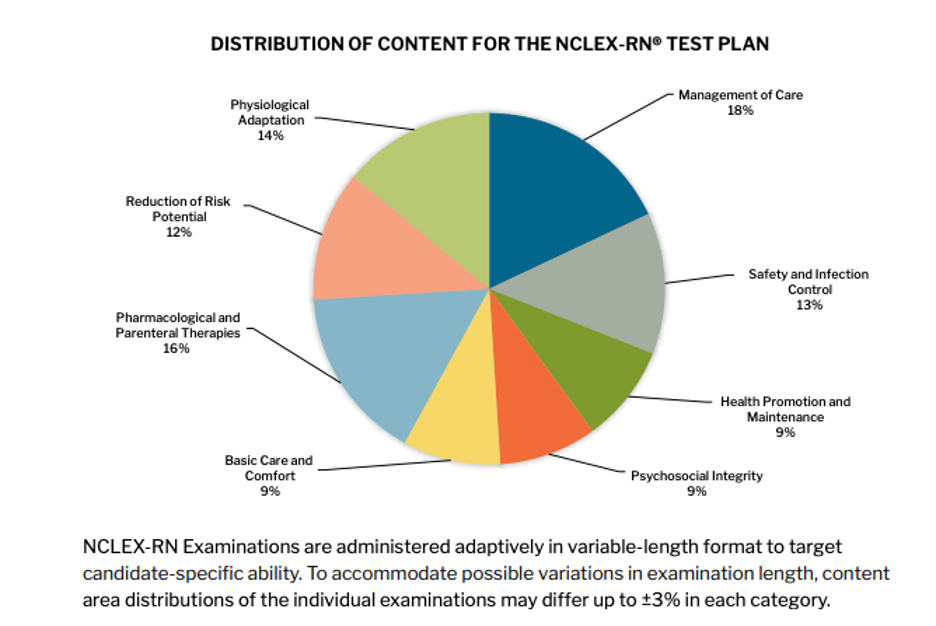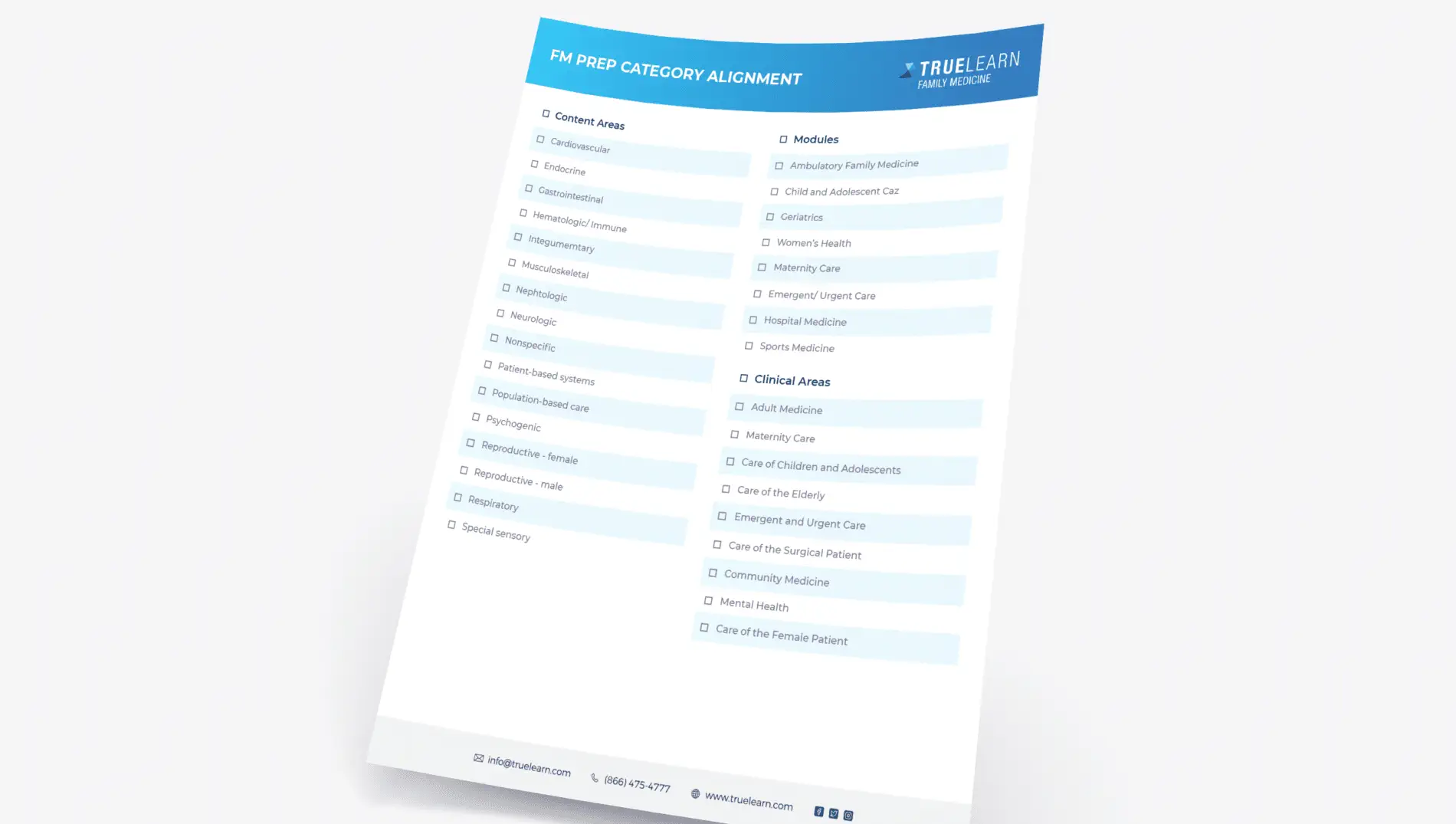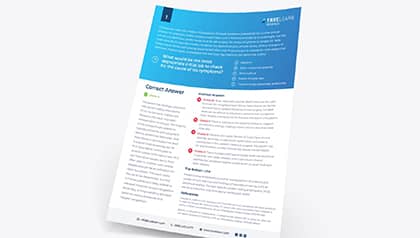Next-Generation NCLEX = Different Student Approach
In April 2023, NCLEX test-takers will likely encounter Next-Generation NCLEX (NGN) items for the first time. Though it is important to remember that 74% of the exam will still be traditional item types.
Dr. Phil Dickison, PhD, RN, Chief Officer, Operations & Examinations, National Council of State Boards of Nursing (NCSBN).was quoted saying, “The reason behind changing the NCLEX® was to begin measuring clinical judgment, but the exam’s focus will not change in terms of the overall content it covers. Just because we’re measuring clinical judgment doesn’t mean all the other stuff that we’ve been measuring is not important; it’s still important. Most of it will be the same as what candidates have seen for the last 4 years.”
That said, there are some things you need to know. There are new item types that could be seen on the NGN:
- Extended Multiple Response
- Drop-Down
- Extended Drag and Drop
- Enhanced Hotspot (Highlight)
- Matrix/Grid
And there are 2 categories of item types:
- Case Study
- Stand Alone
There is also a new scoring model that includes the possibility of receiving partial credit.
Let’s briefly break down the new item types, categories, and then review how to incorporate different study strategies to successfully navigate each type of question.
Five New NGN Item Types
1. Extended Multiple Response
Extended Multiple Response items allow learners to select one or more answer options at a time. There are four different format types: Matrix Multiple Response, Select All that Apply, Select N, and Grouping.
- Matrix Multiple Response: Options are listed in a matrix that can have 2-10 columns and 4-7 rows. Each response could have multiple correct answers and each column must have 1 response option selected.
- Select All that Apply: Includes questions with answers with one or more correct responses. There are at least 5 options with no more than 10.
- Select N: You are given a list of response choices and prompted to select a certain number of options (e.g., Select the 2 findings).
- Grouping: Options are listed in a table that has 2-5 sections/groups. Each group has 2-4 options. You must select at least one option from each section/group.
2. Drop-Down
Drop-down items allow learners to select one option from a dropdown list. There can be multiple dropdown lists that may or may not be related to each other. There are two formats that you may see: Cloze and Rationale. Cloze includes a paragraph of information with one or more drop-down options. Each dropdown can contain 4-5 options. Rationale format includes 1 sentence with 1 cause and 1 effect or 1 sentence with one cause and 2 effects with varying dropdown configurations.
3. Extended Drag and Drop
Extended Drag and Drop items allow learners to move or place response options into answer spaces. There are a minimum of 4 and a maximum of 10 response options. Keep in mind, not all the choices correspond to an answer space. Like the Drop-down item type, there are Cloze and Rationale format types that will require dragging response options to one or more targets.
4. Enhanced HotSpot (Highlight)
Enhanced Hotspot items allow learners to select their answer by highlighting pre-defined words or phrases to determine what is critical for the action. You may be asked to highlight text within the item or within a table.
5. Matrix/Grid
Matrix/Grid items allow the learner to select one or more answer options for each row and/or column. This item can be useful in measuring multiple aspects of the clinical scenario with a single item. This type includes your traditional Multiple Choice with radio buttons that can be selected or unselected, Matrix Multiple Choice where options are shown in a matrix and a single response is selected for each row, and Select all that Apply which multiple options can be selected.
Categories of Items
Case Studies and Stand-alone items both measure clinical judgment as outlined in the NCSBN Clinical Judgment Measurement Model (NCJMM).
The following table compares the two categories of item types.
| Case Study | Stand-alone | ||
| Definition | Case study items unfold real-world nursing scenarios that are then followed by a set of questions | Stand-alone items are individual items that present client information followed by specific questions. There are two types of Stand-alone items – Bow-tie and Trend Items. | |
| Bow Tie | Trend | ||
| # of items | 6 | 1 | 1 |
| # of clinical decisions required from the test-taker | Multiple clinical decisions | Multiple clinical decisions | 1+ clinical decisions |
| Approach | Sequential items are constructed so that all information from a previous item in the set is carried through to the subsequent item within the same set. | Responses fall into 3 categories: actions to take, potential conditions, parameters to monitor. Drag and drop answers into each target. | You are given a set of client needs. For each section, select the nursing intervention(s) that would be appropriate. |
Will NGN items be scored differently?
The scoring model for NGN will extend the current scoring model. Currently, the NCLEX® items are scored as either ‘all correct’ or ‘all incorrect’. These models are referred to as dichotomous models. However, the new NGN scoring models, called polytomous models, will extend this by allowing partial scores of items with multiple points. Examples of this can be found in the following publication.
The new NGN scoring methods are called the 0/1 method, +/– method, and the rationale method. The following publication outlines the methods and shows how they apply to the new item types.
What is the breakdown of areas tested on NGN?
For the full NCLEX-RN® NGN blueprint, reference the below.

Client Needs | Percentage of Items from Each Category/Subcategory |
| Safe and Effective Care Environment | |
| Management of Care | 15-21% |
| Safety and Infection Control | 10-16% |
| Health Promotion and Maintenance | 6-12% |
| Psychosocial Integrity | 6-12% |
| Physiological Integrity | |
| Basic Care and Comfort | 6-12% |
| Pharmacological and Parenteral Therapies | 13-19% |
| Reduction of Risk Potential | 9-15% |
| Physiological Adaptation | 11-17% |
Are there any details on how many NGN items there will be?
All registered nurse (RN) candidates must answer a minimum of 85 items. The maximum number of items that an RN candidate may answer is 150 during the allotted five-hour period. Of the minimum-length examination, 52 of the items will come from the eight content areas listed above in the stated percentages. Eighteen of the items will comprise three clinical judgment case studies.
Case studies are item sets composed of six items that measure each of the six domains of the NCSBN® Clinical Judgment Measurement Model (NCJMM) mentioned earlier: recognizing cues, analyzing cues, prioritizing hypotheses, generating solutions, taking action, and evaluating outcomes. Since clinical judgment is an integrated process, the case studies will span any number of content areas and are therefore counted independently of the content-area-specific items. The remaining 15 items will be unscored pretest items.
The five-hour limit to complete the examination includes all breaks.
Strategies to Add to your Toolbox
“It’s a marathon, not a sprint.”
This saying is used quite often to describe challenges that take that extra effort to be successful. What is sometimes misinterpreted is that training for a marathon not only requires time and energy, but equally important, consistency. Studying for the NCLEX should be a marathon and with evidence-based strategies, you can pass.
STRATEGY 1: Know the exam
One key to success on any exam is knowing about the exam. Basic information to know would include the content outline, number of questions, time allotted for the exam, the types of questions, and how the exam is scored.The types of questions and how the exam is scored is extremely important for the Next Generation NCLEX. Increased motivation and decreased anxiety are both associated with increased test performance. So how do you increase motivation and reduce anxiety?
When you are familiar with the exam procedures, you are generally less anxious because you know what to expect. Your study has been focused on the important information and you have practiced questions in the style of the exam. You have practiced like you will perform. In a Computer Adaptive Test, knowledge about the scoring process may increase your motivation because you know a trick to “beat” the exam. For example, if you know the first 5-10 questions determine the makeup of the rest of the exam, you will be more focused and motivated to get those first questions correct. Additionally, understanding you can earn partial credit may actually motivate{encourage} you to work through a very difficult question more closely, leading to a higher score.
TrueLearn Challenge: Use practice questions to familiarize yourself with the different types of questions. Think about how to best approach each style of question. Evaluate your performance not only based on your content knowledge, but also on how you are approaching questions and managing your time.
STRATEGY 2: Try not to cram
Spaced Practice, also known as spaced repetition, is the process of consolidating information over a period of time. This process usually unfolds over hours or days. The use of spaced repetition has been proven to increase the rate of learning. Because memory decays over time, interrupting that decline (a.k.a. “The Forgetting Curve”) through repeated exposure solidifies memory mastery.
TrueLearn Activity: One way to include spaced practice into your studying is through Interleaving. Unlike massed practice, interleaving or mixing up the material/topics you are studying can feel slow, but the mastery and long-term retention are much stronger. In your next TrueLearn test, select categories from the last 3 courses you have completed.
TrueLearn Challenge: Incorporate 1-2 days of testing that combine several weaker topic areas and track your progress.
STRATEGY 3: Review Questions and Take Practice Tests
Practice retrieval is the most powerful learning tool. It is the act of trying to recall information without having it in front of you. The mental effort of recalling information strengthens your memory. Some examples include testing, free writing, reflection, mind maps, and brain dumps. Often, students re-read or highlight texts and while this may feel like you are retaining information, the benefits do not always last over the long term.
TrueLearn Challenge: After your next didactic, write 3-5 board style questions related to what you just learned. Pass it to a peer to test what they have retained.
STRATEGY 4: The Importance of Managing Your Study Time
There is nothing more valuable than time while you are studying for boards and as you are taking your board exam. It is critical to spend the time allotted efficiently.
While you are studying…
- Make a Plan: Creating a study plan and incorporating realistic goals is key to success. The plan and/or goals can be adjusted as you become more familiar with the routine and material.
- Accountability: Keeping yourself on track will help you focus on the tasks.Try setting mini-deadlines or having a friend to check in.
- Self-Care: It is easy to decline invitations to social events or power through long study sessions. Multiple studies have shown that resting after learning allows for new memories to consolidate better and hence enhance long term retention.
- Build test stamina: Like training for a marathon, it is important that part of your NCLEX training involves building up stamina to get you through a long exam day. As you ramp up your studying, try taking longer tests and incorporating diagnostic exams/practice tests. Building your testing stamina will also reduce anxiety on exam day.
- Know your opponent: Visit the NCSBN and read about the exam format and key definitions.
During the exam…
- Time Management: Time management continues to be key when you are taking the exam. Unlike other exams, The NCLEX requires you to answer every question in the order it is presented and will not allow you to go back to previous questions. Take your time, choose the best answer, and move on to the next.
- Remember, the length of your test has nothing to do with whether you pass or fail. The number of questions you get is based on how you answer the questions. If you answer correctly, a harder question is given to you.
Applying these tips will ultimately help you strengthen your knowledge and prepare you to be successful when you take NCLEX.
Prepare for the NCLEX-RN® with 10% Off TrueLearn and Picmonic bundles!
Use code: NURSING10Resources:


